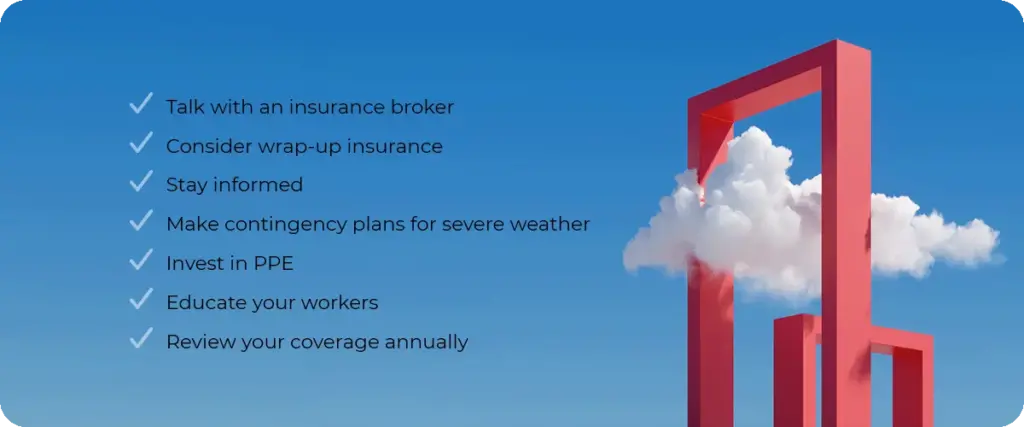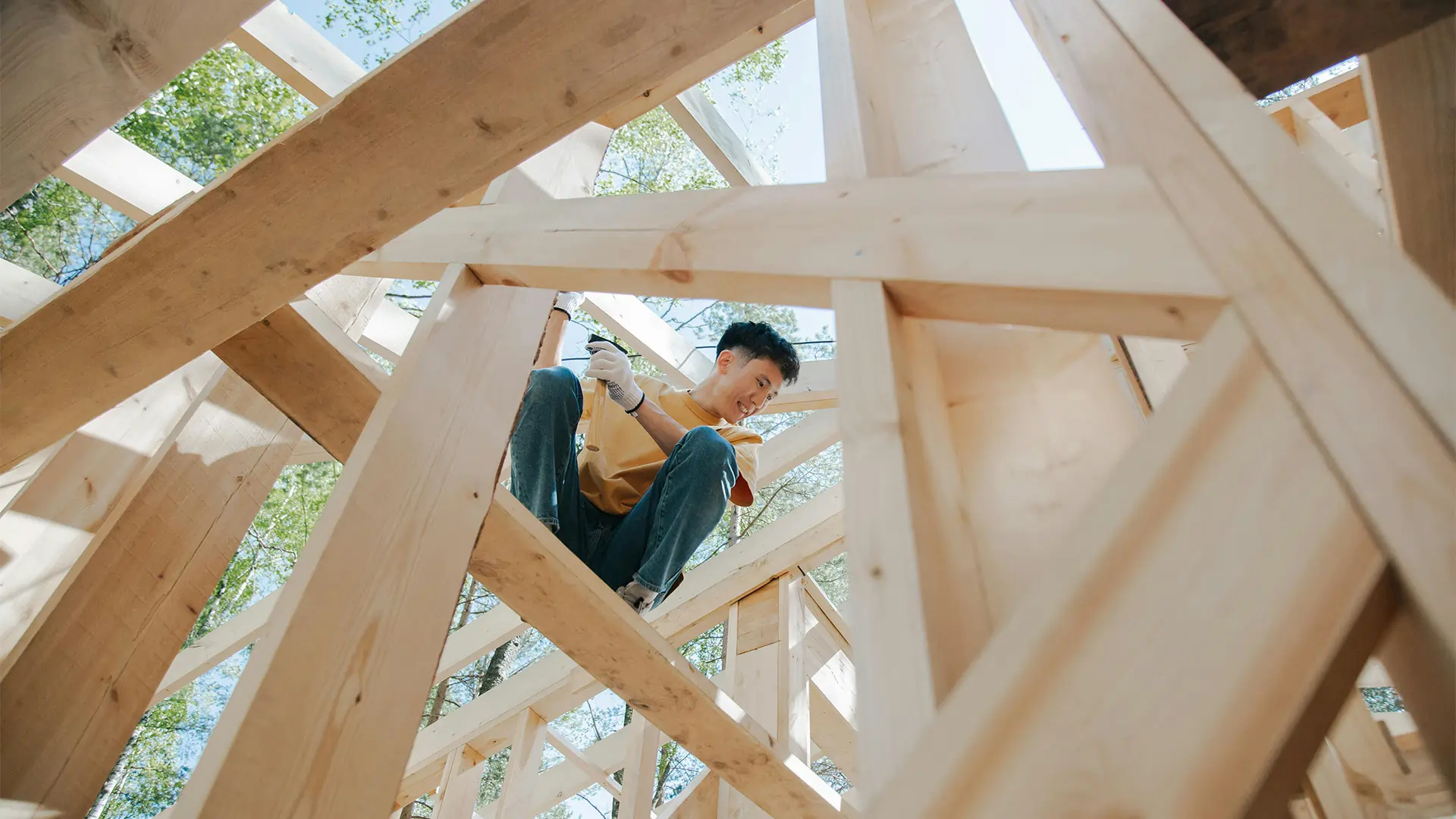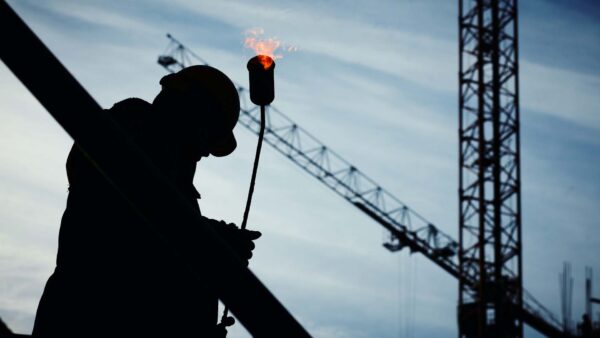With significant weather incidents continuing to grow in frequency and severity, construction businesses need to begin rethinking how to appropriately manage external hazards. As climate change evolves, construction companies could be faced with higher insurance premiums due to increased rates of severe weather, plus the possibility that their insurance coverage may not be sufficient.
As it stands, construction businesses and contractors may need to re-evaluate their existing insurance coverage and make shifts in the way they conduct business to address the ever-growing threat of climate change.
What’s happening?
The Ontario government’s Provincial Climate Change Impact Assessment projects an increase in extreme heat, flooding, and wildfires, which will impact everything from food production to infrastructure.
That doesn’t bode well for contractors and construction businesses, whose company models require them to be active working on roads, sewers, and new builds. Due to the increased risk, certain hazards – fire, water, and wind damage specifically – may soon either come with a minimum $5,000 – $10,000 deductible or be uninsurable altogether. This is a serious spike from the minimum $2,500 deductible a few years ago.
What areas of construction insurance are being affected by climate change?
The Insurance Institute predicts severe weather claims paid out by Canadian insurers will double over the next 10 years. With this in mind, construction and contractor insurance policies may no longer be sufficient in covering businesses against their relative risks. As the risk of loss increases, it is important to know what areas of your insurance could be impacted and where you might need to make changes.
Contractor’s equipment insurance
Contractor’s equipment insurance is a floating coverage since the insured equipment can be transported to and from various locations on any given day. It’s designed to protect assets used by your business that are valued at $2,500 or greater, and may insure them in-transit against losses, or while they are at your worksite. You can add coverage for rented, leased, or borrowed equipment and have options to insure your brand-new assets for up to five years replacement cost.
We recommend reviewing your policy with an insurance broker to ensure your contracting equipment is sufficiently covered against things like fire, flooding, etc. With certain worksites, insurance costs could rise, or coverage could be restricted due to the proximity to a fire hazard. In some instances, a worksite may be uninsurable altogether.
Installation floaters and builder’s risk
Both installation floaters and builder’s risk are other areas that could be heavily impacted. An installation floater is used to cover equipment and materials while on-site awaiting installation, whereas builder’s risk is used to protect buildings under renovation or construction.
Severe weather can delay projects or even hinder them, which can impact insurance due to the increased exposure. If your builder’s risk policy offers insurance for a certain number of days, it might do you good to review your existing policy with your broker to ensure you have enough coverage with extended delays and increased risks.
Constructing a climate-ready future
According to the KPMG Private Enterprise Business Survey, nearly 60% of Canadian small and medium-sized businesses were directly impacted by extreme weather in 2023. These physical risks will continue to grow as the climate change crisis evolves.
Tools like the International Finance Corporation’s new Building Resilience Index (BRI) may become more predominant to help determine a building or site’s ability to stand up to severe weather events. The tool can be used on any type of construction and can evaluate a building’s exposure to natural hazards, considering whatever upgrades have already been implemented to manage risk.
This tool presents beneficial data that will allow insurers to gauge and assess risk and help developers and contractors create resilient buildings more effectively.
Tackling climate risk as a contractor or construction business

Here are some ways to tackle the additional risks being created by climate change and reduce your odds of having to file a claim.
1. Talk with an insurance broker
Climate change is unpredictable and it’s tough to say with exact certainty how everything is going to be affected. With that in mind, your insurance broker is a great source of knowledge and can help adjust your policy to ensure your coverage is up to date.
Risks evolve, equipment and tools depreciate, and your business operations might even shift. If your course of business changes (for example, you offer a new service or expand to a new location), make sure to update your broker to ensure you’re covered.
2. Consider wrap-up insurance
Wrap-up insurance acts as an all-encompassing liability policy and protects both contractors and subcontractors. This ensures everyone’s covered and there isn’t any unexpected exposure.
3. Stay informed
Keeping up-to-date on local weather forecasts and risks specific to your worksite’s locality is increasingly imperative to ensuring you can proactively identify safety issues and construction delays.
4. Make contingency plans for severe weather
It’s important to have contingency plans in place for any weather-related issues that arise.
You may also want to check your construction equipment and materials to ensure they’re adequately weather-resistant, confirm contact information for suppliers, clients, stakeholders and your staff is current, and review your safety training for all construction workers. Make sure your existing protocols for emergencies are clear, concise, and can be followed by everyone.
5. Invest in PPE
Safety equipment such as hard hats, goggles, masks, and gloves are not only a requirement, but they can also help reduce the risk of injuries due to severe weather, hazards like falling debris, or exposure to toxic fumes and materials. Some brands are more weather-resistant than others, so consider PPE that can stand up to harsh conditions.
6. Educate your workers
Construction workers should be educated and informed of what exposures they might face while operating on worksites during inclement weather, such as electrical accidents, falling objects, slippery surfaces, and more. It may be worthwhile to implement a program that considers up-to-date climate change fluctuations and severe weather risks, especially as you work on new and unfamiliar jobsites or even in new cities and provinces.
7. Review your coverage annually
With climate change beginning to have a real, tangible impact on the daily operations of construction businesses and contractors, reviewing your insurance at least once per year is another way to stay on top of things. Your insurance broker can help with this and provide guidance on where your policy may need amending.
Want more information on how to bolster your construction company’s defenses against weather risks driven by climate change? Give us a call. Our team of commercial insurance brokers will be happy to answer any questions you may have.
Looking for contractor insurance?
Speak with a Mitch Insurance broker today to get a quote on Ontario contractor insurance. Learn more >
Call now
1-800-731-2228







